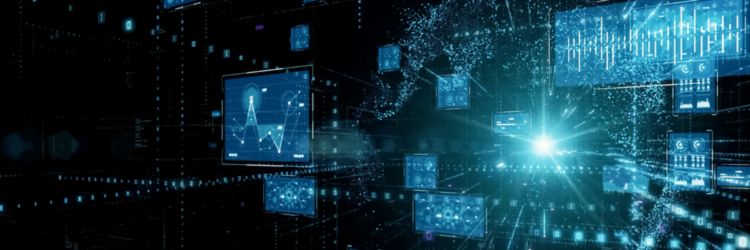Articles
6 Technologies That Will Transform Treasury
- By Joanne Oh
- Published: 11/18/2022
Updated: 6/10/2024

The momentum toward a digital-first strategy continues to accelerate as companies look to stay competitive and relevant in the current business environment.
At the same time, the technology landscape continues to grow with innovative technologies that are available now or just on the horizon. Here are six technologies that treasury professionals should know.
Cloud Technology
The discussion around cloud technology has evolved over the past decade, and it is now viewed as a foundational technology. This category includes software applications and data storage, in addition to the broader computing infrastructure that is available under a shared access model. It provides flexibility and agility as well as the financial benefits of leveraging remote resources.
Application Program Interface (API)
In a digital-first strategy, API technology is another core component. It is a type of software interface that allows two or more computer programs to communicate with each other. This technology makes it easier to connect and integrate real-time capabilities.
In treasury, APIs can provide:
- Back-office automation: Enabling an organization’s treasury and financial software products to automate the sharing of data and process information.
- Third-party integration: Connecting an organization’s back-office systems with third-party solutions.
- Real-time connectivity: Allowing for a near-simultaneous exchange of information between team members, as more cross-platform functions and routines become automated.
Robotic Process Automation (RPA)
RPA technology uses software to automate rules-based processes, particularly repetitive and mundane tasks. The robots are able to work around the clock and produce faster results. This frees up treasury practitioners to focus on higher-priority, value-adding tasks. It also reduces errors.
- Possible applications of RPA technology include:
- Obtaining FX exposure information from multiple systems into a consolidated overview.
- Checking the receipt of and loading bank statement information.
- Converting data into a format instantly readable by another application.
- Retrieving, combining and compiling reports from multiple systems.
Artificial Intelligence (AI) and Machine Learning (ML)
AI technology enables computers and machines to mimic the learning, problem-solving and decision-making capabilities of humans. ML is a branch of AI that allows software applications to find patterns and features in large amounts of data to make decisions and predictions based on new data.
AI and ML have numerous applications in treasury, including:
- Cash Flow Forecasting: Using ML and AI, cash flow forecasting systems can learn and adapt from the source data. This enables automatic and continuous improvements in the accuracy and timeliness of forecasts. Additional simulation engines enable companies to consider scenarios and measure impact, accelerating the informed decision-making process.
- Currency Risk Management: Solutions using ML and AI can create smart algorithms that can perform multiple calculations at once. Constant monitoring determines the best time to trade based on a set of definitions. As this technology is on a continuous learning loop, it continues to update its decision-making process which helps improve future predictions.
- Working Capital Management: Along with advanced optical character recognition (OCR), solutions using ML and AI can read PDF and email remittance information and even screen scrape data from customer portals. This data helps automate and accelerate the cash application process, reducing days sales outstanding (DSO) and improving working capital.
Distributed Ledger Technology (DLT)
DLT is a consensus of replicated, shared and synchronized digital data spread across multiple sites, countries or institutions. Blockchain is one type of distributed ledger. While DLT is more of a long game, it has the potential to provide transformational value by removing business friction and enabling trust.
One appeal of DLT is that it creates an unchangeable record, pulling digital and paper records from different steps of the process together in one place. This aspect of providing greater transparency can create value for processes in treasury as well.
Specific areas of application for treasury include international payments, trade finance, electronic bank management, Know Your Customer (KYC) and reconciliation. Some may say that trade finance is not an area of direct concern for treasury. But treasurers working at companies that have significant trade activities will have an interest in the payments flows.
The current process is typically underpinned by the letter of credit, which can involve multiple people across multiple countries. The paper-based process is complex and sub-optimal. DLT can digitize this process, improving efficiency and overall end-to-end visibility, delivering greater certainty with payments and associated cash flows.
Digital Transformation Roadmap
Digital technologies are shaping solutions for treasury and providing new opportunities to optimize and elevate the function. But while these technologies are powerful, the real value lies in how companies embed these technologies into their operations to transform the business.
Businesses looking to implement these technologies must first create a roadmap that is built on a digital-first foundation, embraces the broader business strategy, and encourages collaboration and partnership.
Are you ready to unlock a competitive advantage and achieve greater operational and financial efficiency? Check out The Digital Transformation of Treasury: A Critical Imperative, written in collaboration with Zanders.
Copyright © 2024 Association for Financial Professionals, Inc.
All rights reserved.

